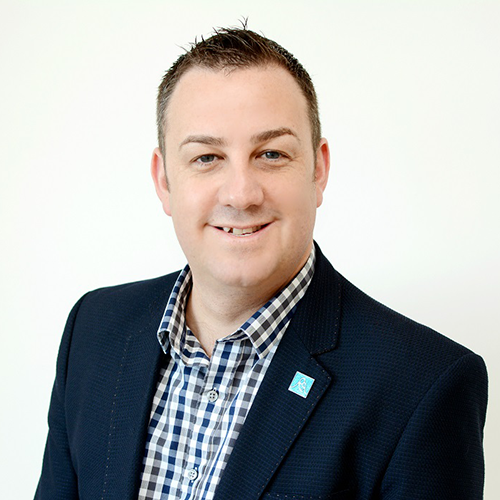
Richard Bradley
IT Director
Kellogg’s UK
Richard Bradley is the IT Director at Kellogg’s. Richard has more than 18 years of experience in the consumer goods industry and has held other roles at Kellogg’s such as a Trade Sector Controller and Head of Field Sales. Prior to Kellogg’s, Richard was the National Account Executive with Carlsberg Group.

You’ve been in the consumer goods industry for 18 years. What’s the biggest change you’ve seen during that time?


Change itself. Nothing has stood still but the principles of what you need to do to win have remained constant. Namely being brilliant at the basics and enabling teams to deliver the best value to your organization. It’s not necessarily being ahead of the trend its making sure the guys that work for you have the right tools at the right time with the right information then you can tackle change head on. You can actually embrace change and win where your competitors have started to struggle, if they have not got their house in order, they’re not brilliant at the basics. They will never be able to power the possibility.

Have you seen that in the different organizations you have worked for? Have they approached that differently?


Organizations have taken a different view on how they are going to win in a very challenging and changing environment. The one thing that surprises me less and less is how big organizations have let their technical depth get. Maybe 5 years ago, you could run an old aging ERP system where you could catch it all together, whereas the pace of change in the industry, taking over efficiencies from organizations that they take over. It was a wake-up call for a lot of other organizations as much as taking fat out is great if you don’t have processes and systems in place to replace the people, you start to struggle. So, I think organizations are very slowly waking up to the size of their technical depth and no longer see IT as a burden but actually as an enabler.

Looking ahead, what do you see as some of the key technology disruptors and challenges?


A key technology disrupter is the power of analytics and predictive analytics. The biggest challenge within that is that everyone talks about digital transformation but actually the data that is going to power your individual digital transformation, in a large part is nonsense. Nobody has kept tabs on the data or cleaned their data. Data has been allowed to flow around an organization and nobody has been concerned about it because it has never been used before. Whereas now it’s the data that’s really telling you how to plan the course interjectory of your organization, it’s no longer a gut feel, it’s more of a ‘let’s give this a try,’ and is it actually the right way to spend our dollars or pounds to get the right advertising out there, and to get the correct product marketing. Ask yourself, have you made sure it’s been sold in the right way to drive growth for your retail partners?
As much as the organizations want to be profitable, if your retail partners aren’t profitable, you don’t have a business for very long. Therefore, I do think data is a huge challenge. The key disruptor being predictive analytics. If you look at an end-to-end process, they’re often spoken about in every organization but they are very rarely leveraged end to end. There are pockets of brilliance in an end-to-end process but because things don’t line up, processes don’t flow naturally and nobody has put that architecture in place, in the right way. The data output is limited so therefore instead of it being a 9 or 10 out of 10 it ends up being a 6 out of 10 which means people start to question their ability. Maybe it puts technological disrupters back 12 months because the promises are there but the delivery depends on the data being correct.

And connected to what you said at the beginning of that then, how should people go about cleaning out their existing data, regardless if its structured or unstructured. How do they clear out the rubbish that is historically there?


I guess – if you’re not using it, why do you need it? If there is legislation and that’s why you need it that’s one thing but if you’re just collating it, simple things like taking data from people’s individual laptops and putting it on a SharePoint so its accessible for everyone; I think you have to do it room by room, function by function but understand where you’re trying to get to as your north star. If your tying it down as a digital transformation journey then you lost out and then you have to streamline for what you are trying to achieve, therefore relying on the data that is powerful and not worry about the data that is irrelevant.

During your career, you’ve been on both the sales side as well as the IT side. In your opinion, what technology (existing or emerging) has the ability to add the most value and impact?


A fully integrated TPO system, although I’ve never actually seen one, I’ve seen people come to present it to me and they present a CRM or TPM solution with a few additional dashboards. For me the missing link is at the start of the store and what is going on at the shelf. Walk it all the way back through so you get involved in supply chain side of things – if it’s in the last 70 yards you’re failing. What is missing is the link to the store via the field sales rep, this needs to be bi-directional. If your TPM pushes down what goes on in store, your field sales execution tool needs to be sending that information back to your TPM system. Sharing information, such as exactly what is going on a real time, coupled with brilliant data, will allow you to be able to start to get the machines to work what are the options and what is the sweet spot so you’ve got people all along that process for the power to make the right decision. This is not about taking away the ability of the craft of selling, it’s about giving the right information to the right people.
From a number of conferences that I have been to, I realize we have just begun the TPM journey and its not been without its pain point. We have put it European wide and as I talk to other people in the industry, there’s quite a reticence to do that. There is quite a different market from different abilities, different legislation and all the challenges that go with it and that’s maybe one of the drivers of not linking up your salesforce enablement tool which is potentially an easier thing to put across a region. Although, I am not saying it’s easy but it’s easier if you put that change through a region. You might have to talk to multiple back-end systems that makes it an absolute mess of interfaces and then to try and then get to a region winning. At Kellogg’s were very lucky that our TPM projects went live at a similar time to our sales enablement project and therefore we always had it on our radar that these two systems should be talking to each other.

When evaluating field force solutions from an IT perspective, what is the key criteria you look for?


I looked at it from a sales rep’s view point. Thinking about if the new technology and new hardware was easy to use and is it going to add value to a field rep’s day. If it is, then adoption rates will go through the roof and everybody would love it. The next layer of criteria is thinking if it is adding value to the organization. Because if it’s only adding value to the rep, that’s great, but your limiting the potential to fulfill. If you then start to bring value to the organization you’ve got the perfect store.
If the reporting in the tool becomes ridiculously easy to understand , although your making many decisions; making decision about the size of your field force, where it should be deployed, when it should be deployed, which retail partners you should be deploying to and where you’re getting the value and where you’re not getting the value becomes easier. When I got into this, people talked about the perfect store and the perfect call and who understands the value of where that perfect call comes from – you can’t do that without a great system in your hands. Can I explain the StayinFront salesforce enablement tool to my ten-year-old? Yes, I can. Could he pick it up and use it? Yes, he could and that’s not to downgrade the ability of a sales rep, but if it is that simple then you are always going to use it. It has to be easy to use and add value. If it becomes very complicated and the knowledge of the tool sits with a few individuals then its dead in the water.
The great thing for me is that we have had the tool, that we call Kaspa enrolled out for more than 12 months. I spoke to the rep, and they no longer refer to the word Kaspa, which is brilliant as that means they are not seeing the system as something that is out there, they see it as part of their toolkit.

Do you have a favorite Kellogg’s cereal? What’s your perfect bowl?


Our new WK Kellogg brand is fantastic and has replaced Crunchy Nut as my favorite. My perfect bowl is served at home with my wife and four children, eating outside in the sunshine.
Thank you Richard for taking the time to share your thoughts with us today.
As the CEO of StayinFront, Tom Buckley is the driving force behind the company’s vision and growth and has built a team of top-flight managers and strategic alliances with key industry partners. With a vision of leveraging technology to solve business problems, Tom founded StayinFront in 2000. He has grown the company into a leading global provider of SaaS-based mobile field solutions in the life sciences and consumer goods industries with successful deployments in over 50 countries across six continents.


Thomas Buckley
Chief Executive Officer
StayinFront
RECENT INTERVIEWS


Subscribe To News & Updates
Quick Contact








